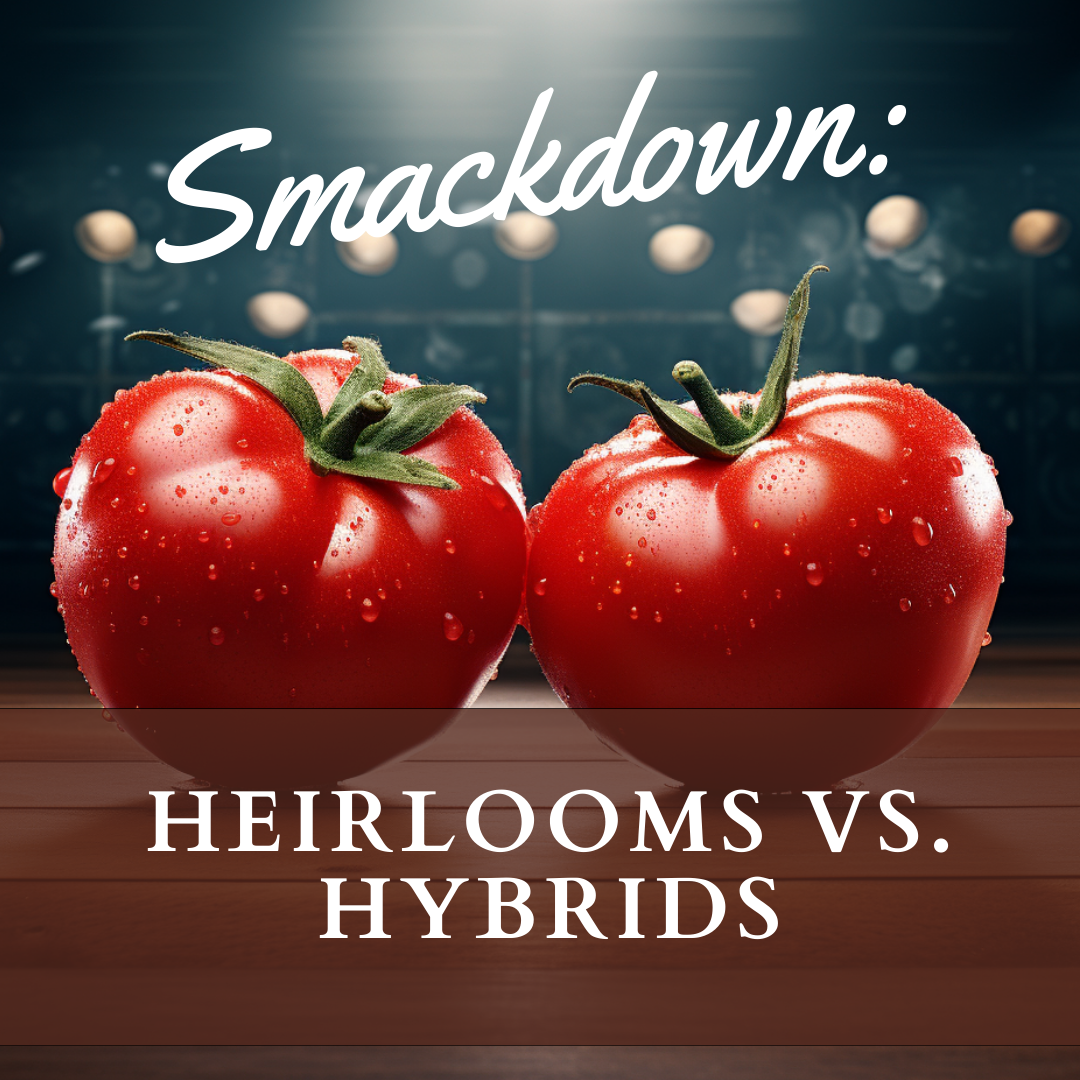Ever stand in the middle of a garden center or flip through a seed catalog and feel absolutely bamboozled by all the options? “Do I go for the heirloom Brandywine tomato or that F1 hybrid, like the Celebrity?” Well, welcome to the Veggie Smackdown—the showdown between F1 varieties and heirloom vegetables. Let’s get into the ring and find out which one lands the knockout punch in terms of disease resistance, taste, production, and quality!
The Champion of Resistance: F1 to the Rescue!
When it comes to disease resistance, F1 varieties are the superheroes of the vegetable world. Take the “Jasper Cherry Tomato” (insert link here) vs the heirloom “Black Krim” (insert link here). While Black Krim is undeniably delicious, Jasper Cherry brings high resistance to late blight, early blight, and even cracking. It’s like a tomato with a shield and sword. So, if your garden feels more like a sick bay than a sanctuary, maybe it’s time to call in the F1 reinforcements.
Savor the Flavor with Row 7
“But what about taste?” you ask. Enter “Row 7’s Habanada Pepper” (insert link here), bred purely for its floral and spicy flavor. But hey, don’t overlook the F1 variety “Gypsy Pepper” (insert link here) which offers a sweet yet complex taste profile. F1 varieties can bring a gourmet experience right to your garden.
Production: Quantity Meets Quality
Let’s consider “Honey Select Corn” (insert link here), an F1 variety that offers both high yield and uniformity. It’s like the ever-ready bunny of the corn world. Now, compare that to the heirloom “Golden Bantam” (insert link here). Golden Bantam has its merits, but when it comes to a consistent yield year after year, Honey Select takes the cake.
Quality Control: F1’s Got Your Back!
For instance, “Elegance Greens Mix” (insert link here) is an F1 blend designed to give you a long-lasting harvest of tasty and texturally diverse salad greens. Compare that to an heirloom lettuce blend and you’ll see the difference in shelf life and resilience.
Zoning In: Breeding for Specific Growing Conditions
In addition to disease resistance, taste, and yield, another salient point to consider is adaptability to specific growing zones. This is especially relevant for those of us gardening in particular climates, like zone 5b in central New Hampshire. Companies like Fruition Seeds specialize in what they call ‘short season’ vegetables, engineered to thrive in regions with shorter growing seasons. A prime example is their ‘Honey Nut’ Butternut Squash (insert link here), which matures in a brisk 95 days. Quick to grow, easy to cut and cook, and incredibly sweet, this is in stark contrast to traditional heirloom butternut squashes like the Waltham Butternut (insert link here), which may require more days to mature, thus proving less reliable in shorter seasons.
Breeding plants for specific zones is a fantastic development in the field of horticulture. It empowers us, the gardeners, to make more informed choices, tailored to the unique conditions of our plots of soil. Whether you prioritize disease resistance, taste, productivity, or adaptability, understanding the merits and drawbacks of F1 and heirloom varieties provides a nuanced perspective for better gardening.
The Bottom Line
Heirlooms are charming; take for example, the ever-popular “Brandywine Tomato” (insert link here). It’s like the vintage wine of the garden—a taste of the past, a slice of history. But if you’re in it for the long haul and wish to keep your gardening game strong, F1 varieties like “Celebrity Tomato” (insert link here) might just be your MVP.
So, what’s it going to be?The tried and true heirlooms or the supercharged F1 varieties? No matter what you choose, happy planting and even happier harvesting!

